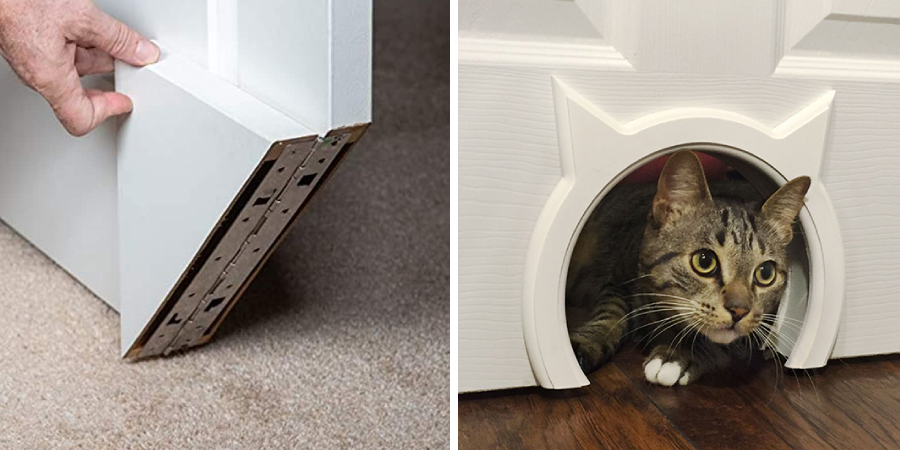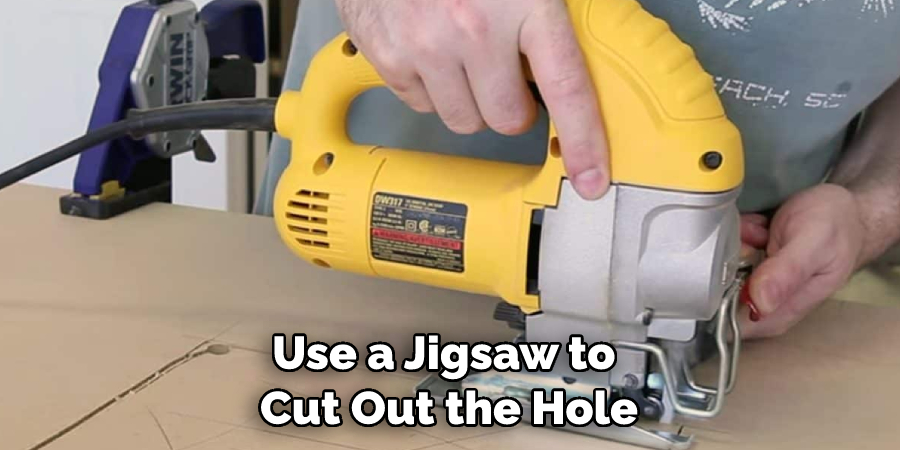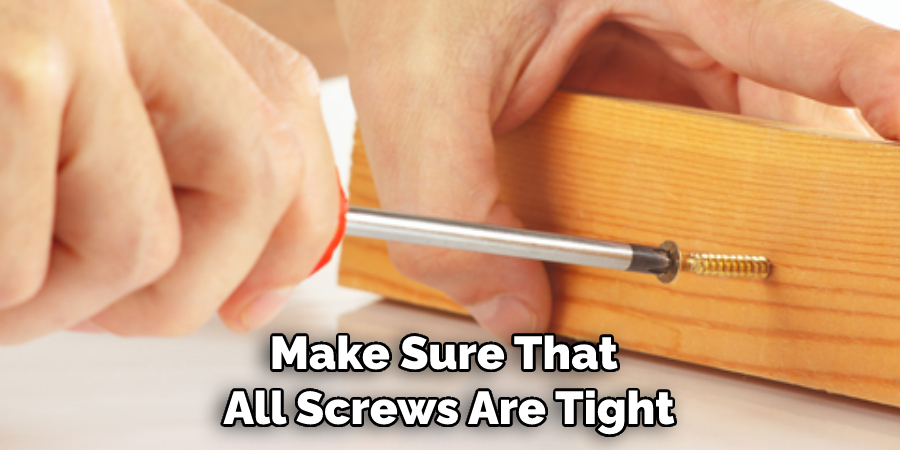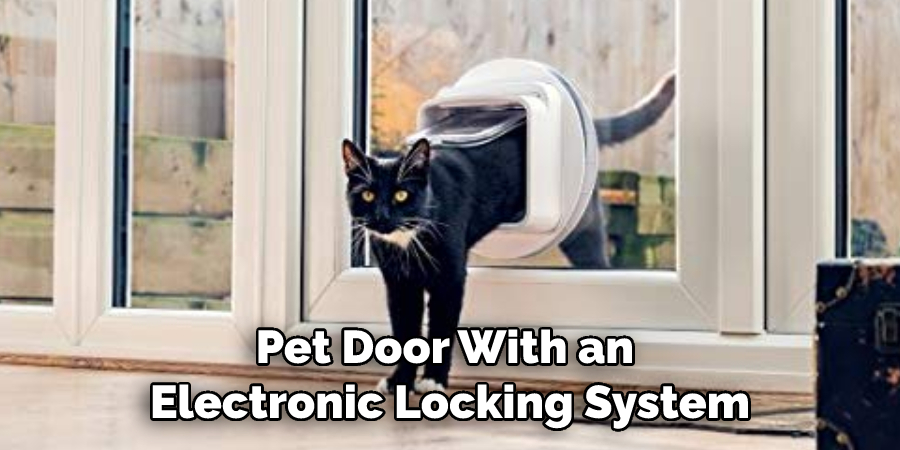A homemade cat door allows cats to come and go from the home without having to open a door for them constantly. This can be useful for letting cats out when they need some fresh air or giving them access to their litter box without taking up the entire day doing so. It also gives pet owners peace of mind, knowing that their pets have a safe, secure way to enter and exit. Making a homemade cat door has many benefits, including convenience, cost savings (as opposed to buying a store-bought one), and control over the size and placement of the opening.

One of the biggest advantages of making a homemade cat door is the cost savings. Materials like wood, plastic, and magnets are much more affordable than purchasing a pre-made pet door. Additionally, it’s possible to create a customized design that fits your home perfectly, which can be difficult with store-bought models. You can find step-by-step instructions on how to make a homemade cat door in this blog article.
Materials You Will Need
- A utility knife
- Measuring tape
- Strong scissors
- Sturdy material for the door (e.g., wood, Plexiglass, metal)
- Sandpaper
- Wood glue or epoxy adhesive
- Hammer and nails
- Vacuum cleaner
- Pencil
- Duct tape or another adhesive tape
Step-by-step Instructions for How to Make a Homemade Cat Door
Step 1: Inspect the Existing Door
Inspect the existing door that you want to install the cat door. Make sure it is a solid core door, and check for any weatherstripping on both sides of the door. Use a pencil to mark where the cat door will be cut into the existing door. Measure carefully so everything lines up properly.
Step 2: Cut the Hole for the Cat Door
Use a jigsaw to cut out the hole for your cat door. Make sure to cut along the pencil lines, and be careful not to make any mistakes. If necessary, use sandpaper or a file to smooth any rough edges around the newly-cut hole. Carefully insert the frame of the cat door into the hole you have cut, and use a screwdriver to fasten it securely in place. Make sure that all screws are tight and there is no extra play on the frame.

Step 3: Measure for Locking Mechanism
Measure the length and width of the cat door frame, and then use a drill to make holes in each corner. These will be used to install the locking mechanism. Securely attach the locking mechanism to the cat door frame. Make sure it locks securely and is able to open and close easily.
Step 4: Secure the Cat Door Frame
Use screws to secure the cat door frame into the existing door. Make sure that all screws are tight and there is no extra play on the frame. Install weatherstripping around the frame of the cat door to keep out drafts. This will also help to prevent any noise from getting in or out when the door is opened and closed.
Step 5: Test the Cat Door
Test the cat door by opening and closing it several times, ensuring it opens and closes properly and locks each time securely. Depending on your cat’s size, adjust the door height so that your cat can easily open and close it. Be sure to make any necessary adjustments if needed.
Step 6: Attach Flap to the Cat Door Frame
Securely attach the flap to the cat door frame, ensuring it can open and close properly. Make sure that all screws are tight and that there is no extra play on the flap.

Tips for How to Make a Homemade Cat Door
- When building your cat door, make sure to use strong materials like plywood or MDF. Secure the edges with screws and glue to ensure that it is well-supported.
- A good latch will help keep your cat door secure, so other animals won’t be able to get into your home. Look for latches that are made of durable materials like metal or plastic, and make sure it is installed correctly.
- Weather-stripping or weatherproof seals around the door frame will help keep cold air from coming in and hot air from escaping. This will also help reduce energy costs.
- Make sure the flap or door you use is made of sturdy material that won’t collapse when your cat pushes against it. It should also be easy to open and close for your pet’s convenience.
- It’s important to place the cat door in a spot that is not too close to entrances or exits of your home. This will help ensure safety and privacy for both you and your pet.
- If you are concerned about other animals coming into your home, consider installing a timer on the cat door. This way, you can control when your cat has access to the outdoors.
- Check the cat door every so often for signs of wear and tear. Make sure all components are working properly and replace them if necessary.
Following these tips ensures that your homemade cat door is secure and provides your cat with safe outdoor access. With a little bit of planning and effort, you can keep your pet safe and give them the freedom they deserve.
How Much Does It Cost to Make a Homemade Cat Door?
The cost to make a homemade cat door can vary depending on the materials used. You’ll need some basic tools like a drill, saw, and jigsaw, as well as some hardware such as screws, hinges, and a latch. Additionally, you will need to purchase the appropriate size pet door for your cat. The cost of these items can range from as little as $20 to more than $100.
Additionally, you may need additional materials, such as wood or metal, depending on the construction of your cat door. These can range in price from a few dollars to several hundred, depending on what you choose.

In general, making a homemade cat door is not very expensive and, when compared to buying a pre-made pet door, it is often much cheaper. Making your own will also give you the ability to customize it to exactly fit the size of your cat and ensure that it is as secure as possible. If done correctly, it can last for many years and be a great addition to any home.
How Often Should You Check and Maintain the Homemade Cat Door?
- Regularly inspect the cat door and hardware, including hinges and locks, to ensure they are properly working.
- Make sure the interior side of the pet door is free from dirt and debris that could impair its functioning or pose a health hazard for your pet.
- Clean any glass or plastic panels with a mild soap and water solution, then rinse and dry them well.
- Check that the pet door flap is intact and not torn so it can properly open and close. If needed, replace the flap with a new one that properly fits your cat’s size.
- Ensure the locking mechanism functions correctly and remains locked when not in use.
- Lubricate any moving parts, such as hinges and locks, with a non-silicone-based lubricant to keep them operating smoothly.
By checking and maintaining your homemade cat door regularly, you can ensure that it is functioning properly and that your pet remains safe. With a little time and effort, you can ensure that your pet has easy access to the outdoors without worrying about them getting stuck inside or out.
How Can You Prevent Other Animals From Entering Through the Cat Door?
- Purchase a pet door with a locking mechanism. Not all pet doors come with locks, so make sure to read the product description before making your purchase.
- Install the cat flap in an interior or exterior door and lock it when not used. Make sure to position the cat flap at least 6 feet off the ground so small animals like raccoons or squirrels cannot enter.
- Install a cat-safe lock on the inside of the door to further prevent unwanted animals from entering. This can be as simple as creating an aluminum foil barrier around the edges of the flap so that only cats can push through it.
- If possible, choose a pet door with an electronic locking system so you can control who enters and exits. This type of lock requires your cats to wear a collar with an ID chip that unlocks the pet door when approaching it.
- Place motion-detecting devices around the opening of the cat flap, such as infrared sensors or ultrasonic sound emitters. This will detect when a small animal is attempting to enter and alert you immediately.
- Consider installing a one-way flap, which does not allow animals to exit but allows cats to come in as needed.

Following these steps ensures that only your cats can access the door and keep unwanted animals out. This will also help reduce the risk of any diseases or pests making their way into your home.
Conclusion
In conclusion, making a homemade cat door is not difficult and can be done with minimal supplies. It is an easy and cost-effective way to give your cat the freedom to move around your home without having to open or close doors constantly. By following these simple steps, you should have no problem creating a safe and secure cat door in no time. I hope reading this post has helped you learn how to make a homemade cat door. Make sure the safety precautions are carried out in the order listed.
You Can Check It Out to Make a Paneled Door
